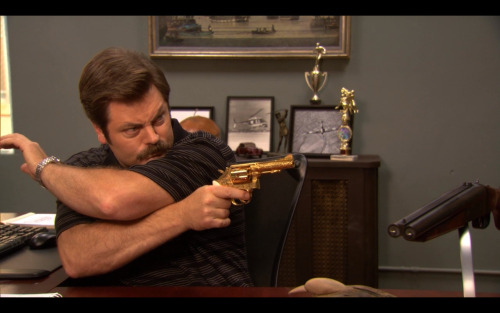Post by buppie05 on Mar 14, 2011 0:38:54 GMT -6

1) More seats to sell. Sometimes we over-think things. More available seats means more $ for the Athletic Department and for UWM.
2) Exclusivity is fine, but it wouldn't come into play too often. Butler may be the only game that any given year we can expect 6k plus in the stands. Besides that, Wisconsin every 5 years, Marquette the same, and the HL tourney are the only times it would matter. Maybe 2 times a year you create exclusivity? For something that seldom, I'll take the guaranteed money now over the potential money down the road.
3) 7-8k makes more noise than 6k, and in those bigger games, noise is a weapon. In my opinion, Butler was better prepared for the noise and aura of Tuesday than we were. It helped them win the game. We need to be able to use that as a weapon ourselves which means more experience in those situations, but also more fans screaming. Along with this, the footprint of a 7-8k arena isn't much different than that of a 6k one. Building size causes that big empty box feeling much more than empty seats, and we can get the same effect either size.
4) Outside events. mwu mentioned graduation, but UWM could also make more money by using the arena to outside events. HS showcases and tournament games, concerts, etc. A bigger arena gives you a better offer to host those events.
5) Prepare like 7-8k won't be a big crowd. If we can string together successful seasons, there's no reason this can't be reality. One of the most disheartening things about Pearl's departure was that it completely stripped the team and its growing fan base looked elsewhere fast. Milwaukee wants to root for the Panthers and our crowd size explodes when there's a great team that people know about. 6k may be that happy point to create exclusivity while making the most people happy now, but if we keep winning it quickly becomes a hindrance. Don't limit your future because of your past.
I'll respond to each, one by one.
1. You say that "Butler may be the only game that any given year we can expect 6k plus in the stands," yet in your first point you contradict that by saying "more people, more seats." That was the kind of thinking that brought us to the Cell in the first place instead of using the goodwill of our first NCAA Tournament to build a replacement for the Klotsche Center. When you talk about 8,000 seats being better because you can fit more than 6,000, you're talking about accommodating everyone. I don't know about you, but I'd rather have a 6,000 seat arena for 6,500 fans, forcing 500 to watch on TV, than have 8,000 seats and 6,500 fans so everyone knows exactly how big our fan base is - not enough to fill our own gym. The Panthers could, one day, be a team that will get 8,000 people per game, but it's not today, and it will be fleeting even if it is. Without major conference membership and the name opponents that association brings, Milwaukee's success in the stands will largely depend on its success on the floor. And a refresher - our current ceiling is 5,300 back in 05-06. If it's money that the AD needs, then ticket prices can be raised if 6,000 seats are full.
2. Besides completely contradicting yourself in points 1 and 2, the obvious answer to this is that if you're right, and our team does not pull in a large amount of fans for the majority of its games, than the Panthers will play the majority of their games in an 8,000 seat arena with whatever fans are there. For a game with 3,000 fans, you're talking about an arena that's 35% full compared to a 6,000-seat arena that's 50% full. Forget the exclusivity; every year of our basketball team's history, they have not come close to averaging 8,000. Or even 6,000 for that matter. Assuming that the average game will bring in 2,500 in bad years to 5,000 in good years, the 6,000 seat arena will be far more full than the 8,000 seat arena. I'd rather have a recruit see 2,500 at a nearly half-full arena than 2,500 at a 30% full arena. You can tell the difference; 6,000 will always be fuller, and a better college basketball atmosphere.
3. 8k makes no more noise than 6k, or at the very least the difference is negligible. Tuesday's game had just as much noise as any game in the 17,000 seat Kohl Center. If noise is what you're searching for, in the hunt for a home court advantage, then you should be more interested in the shape of the arena, the height of the ceiling and the placement of the student section. I hate to say it, but our paying customer season-ticket holders act, for the most part, like they're watching interpretive dance - they clap awkwardly, like they might be doing it at the wrong point in the show. More important than anything is getting the alumni and season ticket holders to get up off their asses and really cheer. You don't need to be standing 24/7, but they get out of their seats at halftime and in the last 2 minutes of the game.
4. The events are a perfect reason to have the arena at 6k. The Cell is nearly jam-packed for every graduation, so a 6k arena compared to an 8k arena is nothing; you'd need to do multiple graduations. But for other events, a 6k arena is better. Luckily I've worked in promoting so I have a bit of an idea. At 8,000, a promoter would look at the campus neighborhood, see the size, and say "Why should I be putting this on here when I can get 3k more in the Cell?" The fact of the matter is 8k and 11k arenas will draw the same acts, and you'll be fighting to get the acts you want when the Cell's location and size are better. A 6k arena is significantly smaller, and in Milwaukee, an arena this size doesn't exist. If a promoter isn't very sure of his chances to sell out, he's much more likely to go for the 6k arena than the 8k. And if he's confident he can put 8k in the seats, he'll be confident enough to go for 11k. High school tournaments would be suited for the east side's arena regardless of size, because the current northeast side sectional arena is the Whitefish Bay gym. But in any case, the 6k arena would be better suited, because the high schools aren't going to come close to either number. Showcases, like the one Kyle Kelm's Randolph team played in last year at UWM, can happen in any arena.
5. You really make two points in here; you say that stringing together successful seasons can bring the attendance up to a point where we can average more than 6k, and you also say that in the future, if we build at 6k we could very well fill it up and be looking for more seats. So....
5a. We have strung together several successful seasons. From 02-03 to 05-06, we were the class of the conference. We had Bruce Pearl (until 05) as a wonderful cheerleader for the program, and our attendance was significantly ahead of what it is today. Bruce Pearl was a one-of-a-kind salesman, yet our attendance never quite reached 6,000. It plateaued in Jeter's first year at 5,300, and that was that. The kind of success we'll need to go higher is multiple runs in the NCAA Tournament and a continuation of being a good team. We can market the hell out of it, perhaps even fill the 6k, but it's a mountain to climb and the arena would be rocking even for the worst games on the schedule.
5b. If we get to the future and have more than 6,000 fans who want season-tickets, you know what we create? A waiting list. It's one of the things that fan bases are judged by; if you have trouble getting in the door, you want to be in there more. Conversely, if the arena isn't full, people know it's not what everyone wants to be doing.
Also, as I said before, one of the drawings I've seen is a 6,000 seat arena with the option to spend a little more at a later date to add 2k seats. If we ever get to the point where we want 8,000, we can go with an option like this. If we don't, we'll look much better with crowds in a 6k arena than an 8k arena.
If you're still not convinced, ask the people that will be recruiting players to play in this new arena.
Its settled, 7k it is.







